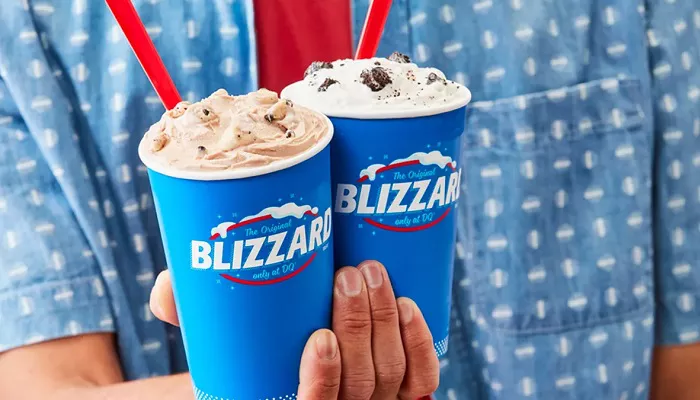On a sweltering summer afternoon, few things are as satisfying as a classic cone from Dairy Queen. But here’s a surprising fact: what you’re enjoying isn’t officially considered ice cream by U.S. government standards.
According to the Food and Drug Administration (FDA), a product must contain at least 10% milkfat to earn the “ice cream” label. Dairy Queen’s famed soft serve falls short of that mark, containing just 5% milkfat. That’s why the brand markets its dessert as “soft serve” instead of ice cream.
While it may look, taste, and feel like ice cream, Dairy Queen’s soft serve occupies its own category. The same goes for other major chains in the industry—many of which follow similar recipes that favor a lighter texture and reduced fat content.
A Chilled Legacy
Dairy Queen’s journey with soft serve began in 1940, but the concept was years in the making. In 1938, John Fremont McCullough and his son Alex developed a unique recipe for a frozen treat that didn’t solidify like traditional ice cream. It could be served directly from a machine—an innovation that turned heads. Just two years later, they opened the first Dairy Queen location in Illinois.
Other pioneers were also exploring frozen dessert possibilities. In 1934, Tom Carvel—yes, of Carvel Ice Cream—turned an ice cream truck breakdown into a business breakthrough when customers embraced the melting product’s softer texture. By 1936, Carvel had opened his first store and eventually helped commercialize soft-serve machines.
Supporting these developments were key inventors. Charles E. Taylor patented the continuous ice cream freezer in 1926, laying the groundwork for today’s soft-serve equipment. Then, in 1939, Harry Oltz advanced the field further with a patent for freezing and serving soft serve consistently.
While no single person can claim to have invented soft serve outright, it’s clear that a combination of inventive recipes and machinery brought the product to life.
Busting the Thatcher Myth
One persistent rumor involves former British Prime Minister Margaret Thatcher. Long before her political career, Thatcher studied chemistry at Oxford and worked for J. Lyons & Company, where she researched emulsifiers—ingredients that help maintain smooth textures in products like soft serve.
Despite tabloid claims dubbing her the “mother of soft serve,” the timeline doesn’t hold up. Thatcher worked in food science in the late 1940s—well after soft serve had debuted in the U.S. In fact, soft-serve culture didn’t reach the UK until 1958, when Mr. Whippy launched mobile soft-serve vans.
Though her contributions to food chemistry were notable, Thatcher didn’t invent soft serve.
Why Soft Serve Still Reigns
Soft serve remains a beloved American staple—not because it’s technically ice cream, but because of its silky consistency, affordability, and nostalgic value. Served at a warmer temperature (18 to 21 degrees Fahrenheit) than traditional ice cream (0 to 5 degrees), it’s easier to eat on the go and has that melt-in-your-mouth charm.
Chains like Dairy Queen, Carvel, and even newer frozen yogurt franchises continue to serve millions of cones annually. While trends like rolled ice cream and frozen yogurt franchises are gaining popularity, classic soft serve hasn’t lost its place in the frozen dessert world.
For aspiring entrepreneurs, ice cream franchise opportunities and yogurt franchise costs remain hot topics, with many looking to enter the industry through well-known brands that already serve up these classic, crowd-pleasing treats.
So the next time you order a swirl of vanilla or chocolate from Dairy Queen, remember: it may not be “ice cream” in the strictest sense, but it’s a flavorful icon steeped in history—and just as satisfying.
Related topics
- 35 Sweet Spots Join 2025 Vancouver Ice Cream Festival
- Discovering Premium Ice Cream: Quality, Flavor, and Innovation | Unlocking Ice Cream Franchise Opportunities
- Glover’s Ice Cream Marks 100 Sweet Years in Indiana


